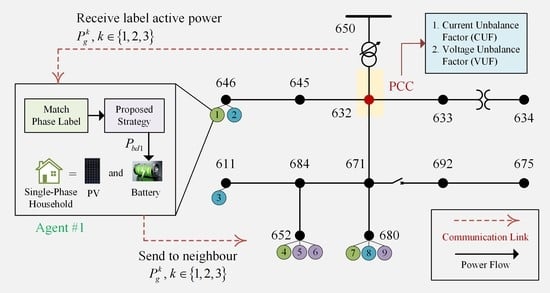Distributed Control Strategy of Single-Phase Battery Systems for Compensation of Unbalanced Active Powers in a Three-Phase Four-Wire Microgrid
Abstract
:1. Introduction
1.1. Unbalance Compensation by Power Electronic Converters
1.2. Unbalance Compensation by Management of EVs/PEVs
1.3. Unbalance Compensation by ESSs
- A distributed clustering method for labelling was developed. The three-phase active powers at the point of common coupling are labelled with phase labels a, b and c. Then, the values of the labelled active powers are sent to a neighbouring agent in a distributed manner via unidirectional communication network. Subsequently, the agents use the labelled active powers to determine to select its own phase data.
- Within each agent, the average grid active power is calculated based on information received from the neighbouring agent. Then, using the proposed distributed power balancing control strategy, the battery storage systems cooperatively charge/discharge their active powers to minimize the difference between the average grid power and the phase active power to which they belong. Agents are allowed to disconnect and reconnect without affecting the balancing operation.
- Modified IEEE-13-bus test system with real household PV powers and load demand over 24 h are used to verify the performance of the proposed strategy.
2. Formulation of Unbalanced Active Power Problem
2.1. System Description
2.2. Indicators for Measurement of Unbalanced Conditions
2.3. Constraints on Battery Storage Systems
2.4. Local Active Power Control Strategy
3. Active Power Balancing Control Strategy
3.1. Centralized Active Power Balancing Strategy
3.2. Distributed Active Power Balancing Strategy
3.2.1. Communication Graph
3.2.2. Distributed Power Balancing Control Strategy
4. Verification Results
4.1. Local Power Balancing Control Strategy
4.2. Centralized Power Balancing Control Strategy
4.3. Distributed Power Balancing Control Strategy
4.4. Comparison of Balancing Control Strategies
5. Conclusions
Author Contributions
Funding
Institutional Review Board Statement
Informed Consent Statement
Data Availability Statement
Acknowledgments
Conflicts of Interest
References
- Rafi, F.H.M.; Hossain, M.; Rahman, M.S.; Taghizadeh, S. An overview of unbalance compensation techniques using power electronic converters for active distribution systems with renewable generation. Renew. Sustain. Energy Rev. 2020, 125, 109812. [Google Scholar] [CrossRef]
- Von Jouanne, A.; Banerjee, B. Assessment of voltage unbalance. IEEE Trans. Power Deliv. 2001, 16, 782–790. [Google Scholar] [CrossRef]
- Castilla, M.; Miret, J.; Camacho, A.; Matas, J.; García de Vicuña, L. Voltage Support Control Strategies for Static Synchronous Compensators Under Unbalanced Voltage Sags. IEEE Trans. Ind. Electron. 2014, 61, 808–820. [Google Scholar] [CrossRef]
- Yunus, K.; De La Parra, H.Z.; Reza, M. Distribution grid impact of plug-in electric vehicles charging at fast charging stations using stochastic charging model. In Proceedings of the 2011 14th European Conference on Power Electronics and Applications, Birmingham, UK, 30 August–1 September 2011; pp. 1–11. [Google Scholar]
- Shahnia, F.; Wolfs, P.J.; Ghosh, A. Voltage unbalance reduction in low voltage feeders by dynamic switching of residential customers among three phases. IEEE Trans. Smart Grid 2014, 5, 1318–1327. [Google Scholar] [CrossRef] [Green Version]
- Wu, P.H.; Chen, H.C.; Chang, Y.T.; Cheng, P.T. Delta-Connected Cascaded H-Bridge Converter Application in Unbalanced Load Compensation. IEEE Trans. Ind. Appl. 2017, 53, 1254–1262. [Google Scholar] [CrossRef]
- Lefcourt, A. Effects of Electrical Voltage/Current on Farm Animals: How to Detect and Remedy Problems. Agriculture Handbook; Technical Report; Agricultural Research Service: Albany, CA, USA, 1991.
- Surbrook, T.C.; Reese, N.D.; Kehrle, A.M. Stray Voltage: Sources and Solutions. IEEE Trans. Ind. Appl. 1986, IA-22, 210–215. [Google Scholar] [CrossRef]
- Zhu, J.; Chow, M.Y.; Zhang, F. Phase balancing using mixed-integer programming [distribution feeders]. IEEE Trans. Power Syst. 1998, 13, 1487–1492. [Google Scholar] [CrossRef]
- Hsu, Y.Y.; Yi, J.H.; Liu, S.; Chen, Y.; Feng, H.; Lee, Y. Transformer and feeder load balancing using a heuristic search approach. IEEE Trans. Power Syst. 1993, 8, 184–190. [Google Scholar] [CrossRef]
- Zeraati, M.; Golshan, M.E.H.; Guerrero, J.M. Voltage Quality Improvement in Low Voltage Distribution Networks Using Reactive Power Capability of Single-Phase PV Inverters. IEEE Trans. Smart Grid 2019, 10, 5057–5065. [Google Scholar] [CrossRef]
- Rafi, F.H.M.; Hossain, M.J.; Lu, J. Improved Neutral Current Compensation with a Four-Leg PV Smart VSI in a LV Residential Network. IEEE Trans. Power Deliv. 2017, 32, 2291–2302. [Google Scholar] [CrossRef]
- Md Rafi, F.H.; Hossain, M.J.; Town, G.; Lu, J. Smart Voltage-Source Inverters with a Novel Approach to Enhance Neutral-Current Compensation. IEEE Trans. Ind. Electron. 2019, 66, 3518–3529. [Google Scholar] [CrossRef]
- Yao, M.; Hiskens, I.A.; Mathieu, J.L. Mitigating Voltage Unbalance Using Distributed Solar Photovoltaic Inverters. IEEE Trans. Power Syst. 2021, 36, 2642–2651. [Google Scholar] [CrossRef]
- Nejabatkhah, F.; Li, Y.W. Flexible Unbalanced Compensation of Three-Phase Distribution System Using Single-Phase Distributed Generation Inverters. IEEE Trans. Smart Grid 2019, 10, 1845–1857. [Google Scholar] [CrossRef]
- Neukirchner, L.; Görbe, P.; Magyar, A. Voltage unbalance reduction in the domestic distribution area using asymmetric inverters. J. Clean. Prod. 2017, 142, 1710–1720. [Google Scholar] [CrossRef]
- Jabalameli, N.; Su, X.; Ghosh, A. Online centralized charging coordination of PEVs with decentralized var discharging for mitigation of voltage unbalance. IEEE Power Energy Technol. Syst. J. 2019, 6, 152–161. [Google Scholar] [CrossRef]
- Zeraati, M.; Hamedani Golshan, M.E.; Guerrero, J.M. A Consensus-Based Cooperative Control of PEV Battery and PV Active Power Curtailment for Voltage Regulation in Distribution Networks. IEEE Trans. Smart Grid 2019, 10, 670–680. [Google Scholar] [CrossRef] [Green Version]
- Akhavan-Rezai, E.; Shaaban, M.F.; El-Saadany, E.F.; Karray, F. Managing demand for plug-in electric vehicles in unbalanced LV systems with photovoltaics. IEEE Trans. Ind. Inform. 2017, 13, 1057–1067. [Google Scholar] [CrossRef]
- Hernández, J.C.; Langella, R.; Cano, A.; Testa, A. Unbalance characteristics of fundamental and harmonic currents of three-phase electric vehicle battery chargers. IET Gener. Transm. Distrib. 2020, 14, 6220–6229. [Google Scholar] [CrossRef]
- Alam, M.J.E.; Muttaqi, K.M.; Sutanto, D. Community energy storage for neutral voltage rise mitigation in four-wire multigrounded LV feeders with unbalanced solar PV allocation. IEEE Trans. Smart Grid 2015, 6, 2845–2855. [Google Scholar] [CrossRef] [Green Version]
- Alam, M.J.E.; Muttaqi, K.M.; Sutanto, D. Alleviation of neutral-to-ground potential rise under unbalanced allocation of rooftop PV using distributed energy storage. IEEE Trans. Sustain. Energy 2015, 6, 889–898. [Google Scholar] [CrossRef] [Green Version]
- Bozalakov, D.V.; Mnati, M.J.; Laveyne, J.; Van den Bossche, A.; Vandevelde, L. Voltage unbalance and overvoltage mitigation by using the three-phase damping control strategy in battery storage applications. In Proceedings of the 2018 7th International Conference on Renewable Energy Research and Applications (ICRERA), Paris, France, 14–17 October 2018; pp. 753–759. [Google Scholar]
- Wong, J.; Lim, Y.S.; Morris, S.; Morris, E.; Chua, K.H. Fuzzy-driven energy storage system for mitigating voltage unbalance factor on distribution network with photovoltaic system. AIP Conf. Proc. 2017, 1828, 020019. [Google Scholar]
- Ferreira, D.M.; Brandao, D.I.; Bergna-Diaz, G.; Tedeschi, E.; Silva, S.M. Distributed Control Strategy for Low-Voltage Three-Phase Four-Wire Microgrids: Consensus Power-Based Control. IEEE Trans. Smart Grid 2021, 12, 3215–3231. [Google Scholar] [CrossRef]
- Yu, S.S.; Chu, S.W.; Wang, C.M.; Chan, Y.K.; Chang, T.C. Two improved k-means algorithms. Appl. Soft Comput. 2018, 68, 747–755. [Google Scholar] [CrossRef]
- Geva, A.B. Hierarchical unsupervised fuzzy clustering. IEEE Trans. Fuzzy Syst. 1999, 7, 723–733. [Google Scholar] [CrossRef]
- Flanagan, J.A. Self-organisation in Kohonen’s SOM. Neural Netw. 1996, 9, 1185–1197. [Google Scholar] [CrossRef]
- Aci, M.; Avci, M. K nearest neighbor reinforced expectation maximization method. Expert Syst. Appl. 2011, 38, 12585–12591. [Google Scholar] [CrossRef]
- Sharma, V.; Haque, M.H.; Aziz, S.M. PV generation and load profile data of net zero energy homes in South Australia. Data Brief 2019, 25, 104235. [Google Scholar] [CrossRef] [PubMed]
- Pinthurat, W.; Hredzak, B. Decentralized Frequency Control of Battery Energy Storage Systems Distributed in Isolated Microgrid. Energies 2020, 13, 3026. [Google Scholar] [CrossRef]
- Lewis, F.L.; Zhang, H.; Hengster-Movric, K.; Das, A. Cooperative Control of Multi-Agent Systems: Optimal and Adaptive Design Approaches; Springer Science & Business Media: Berlin/Heidelberg, Germany, 2013. [Google Scholar]
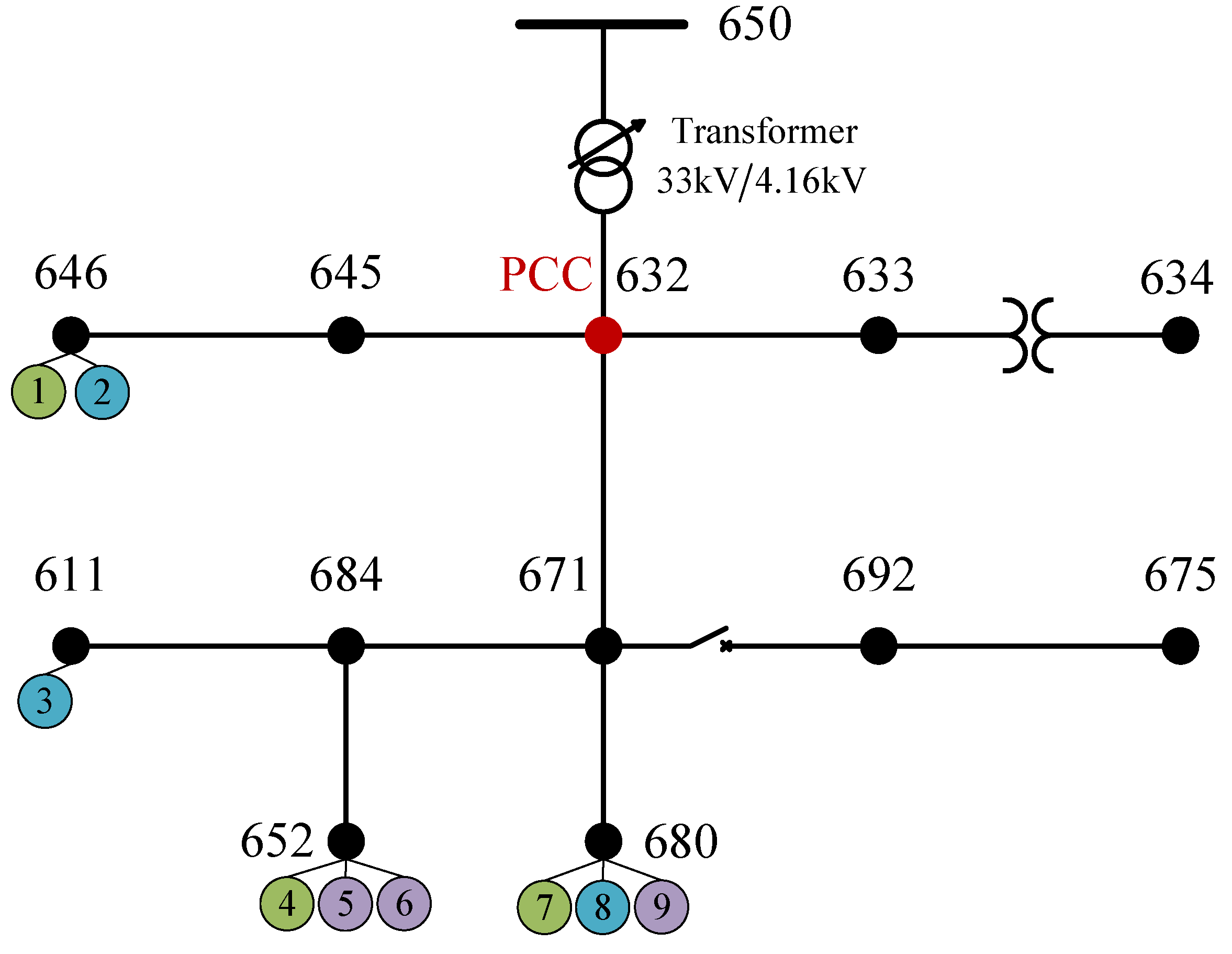

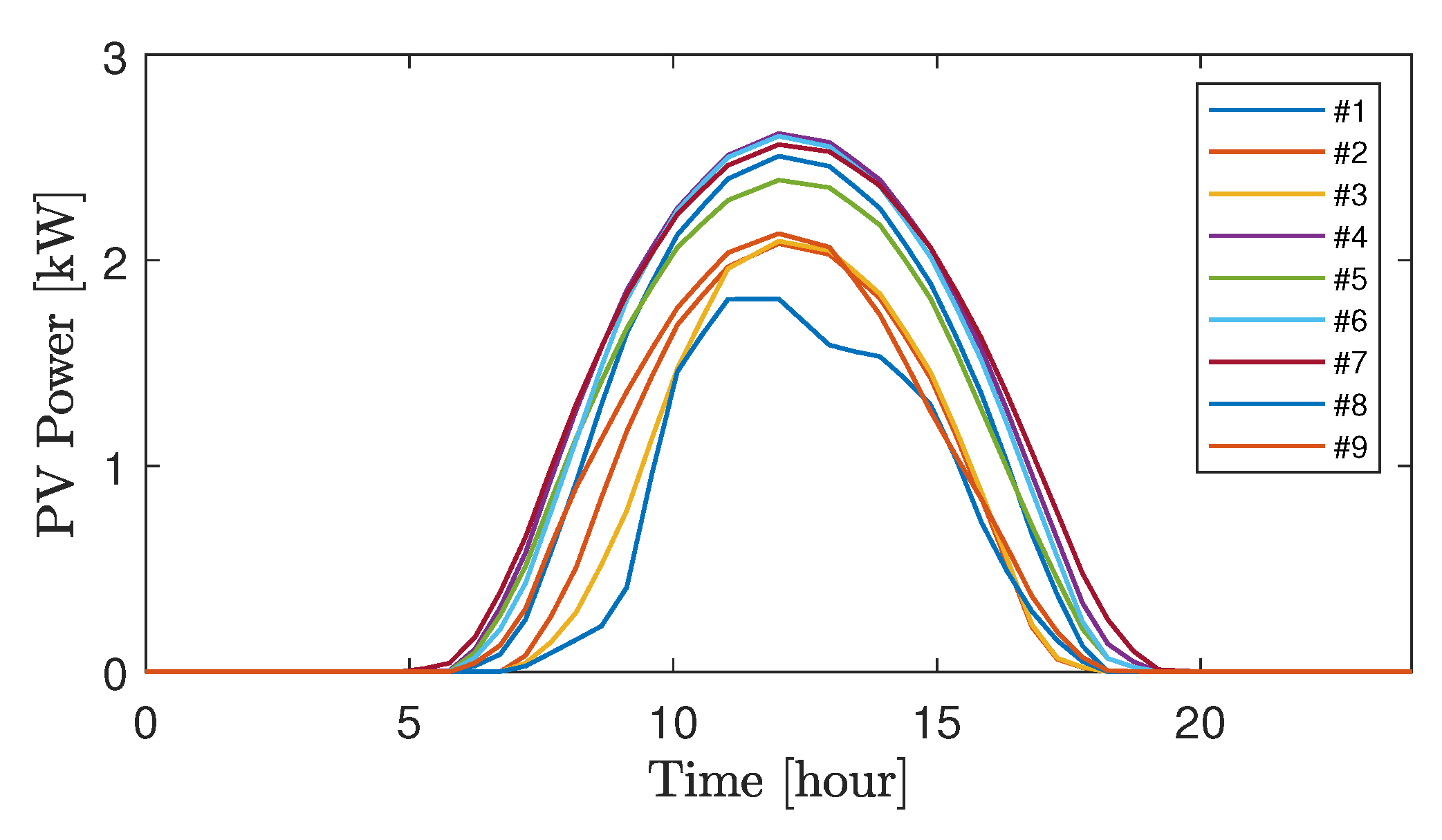
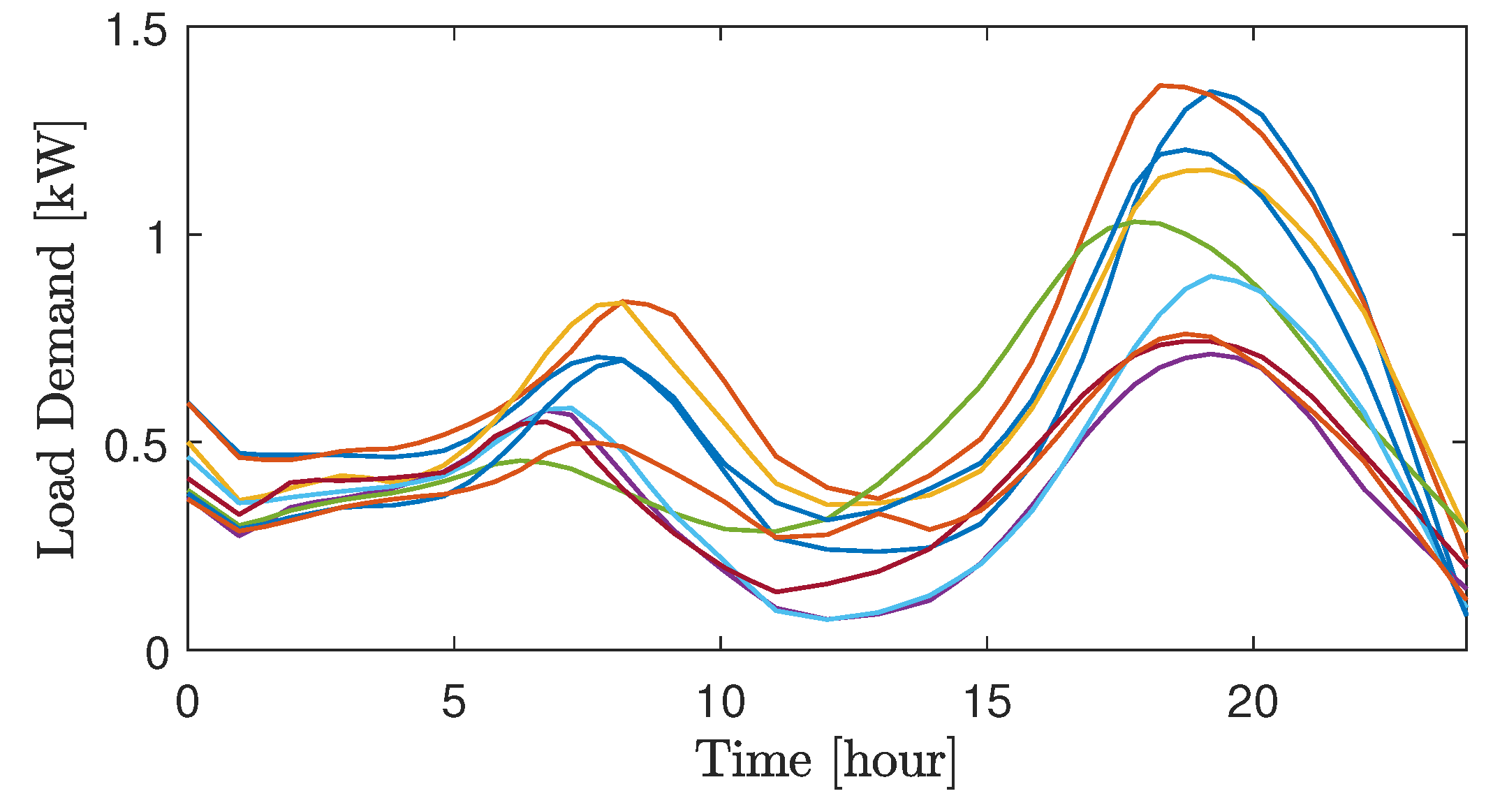
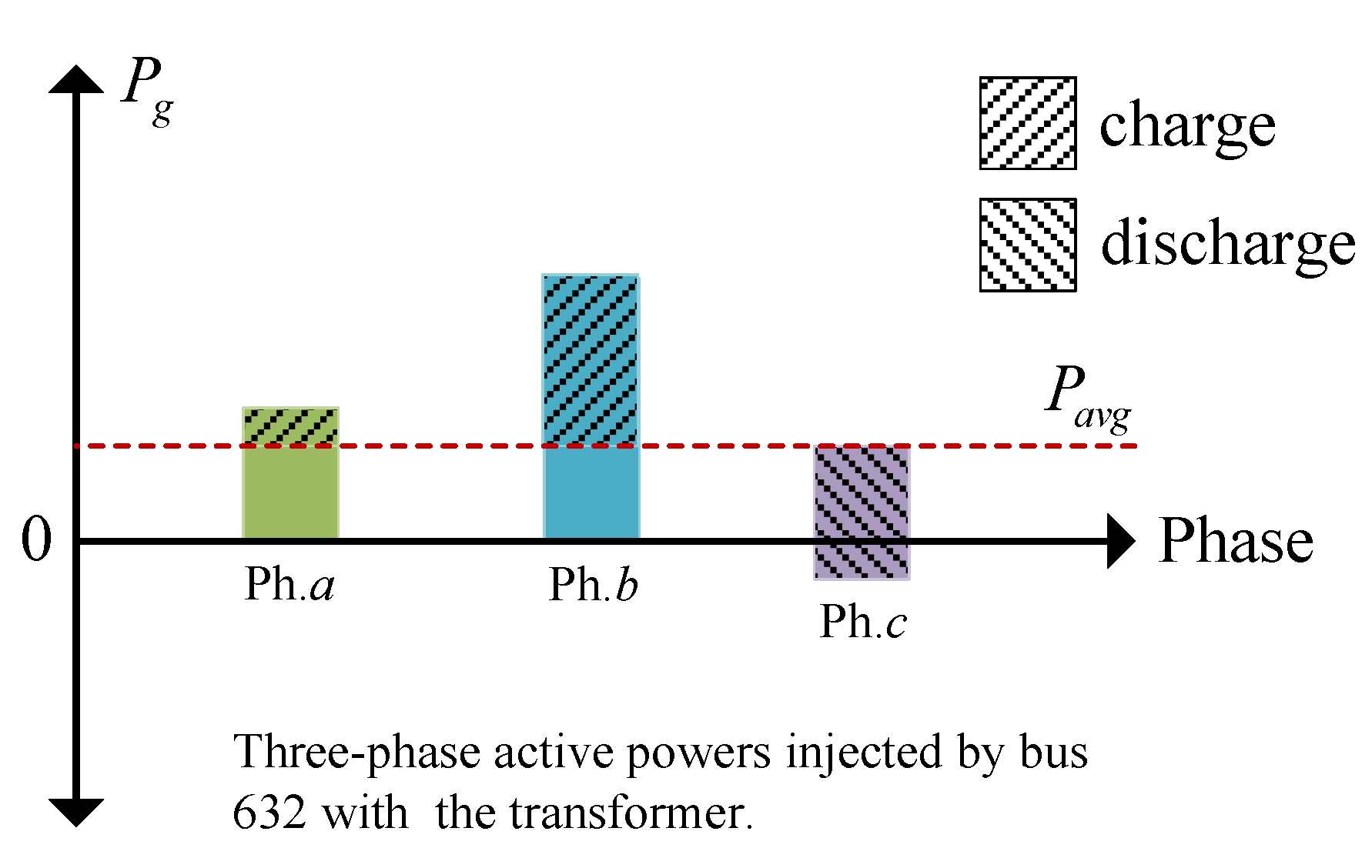
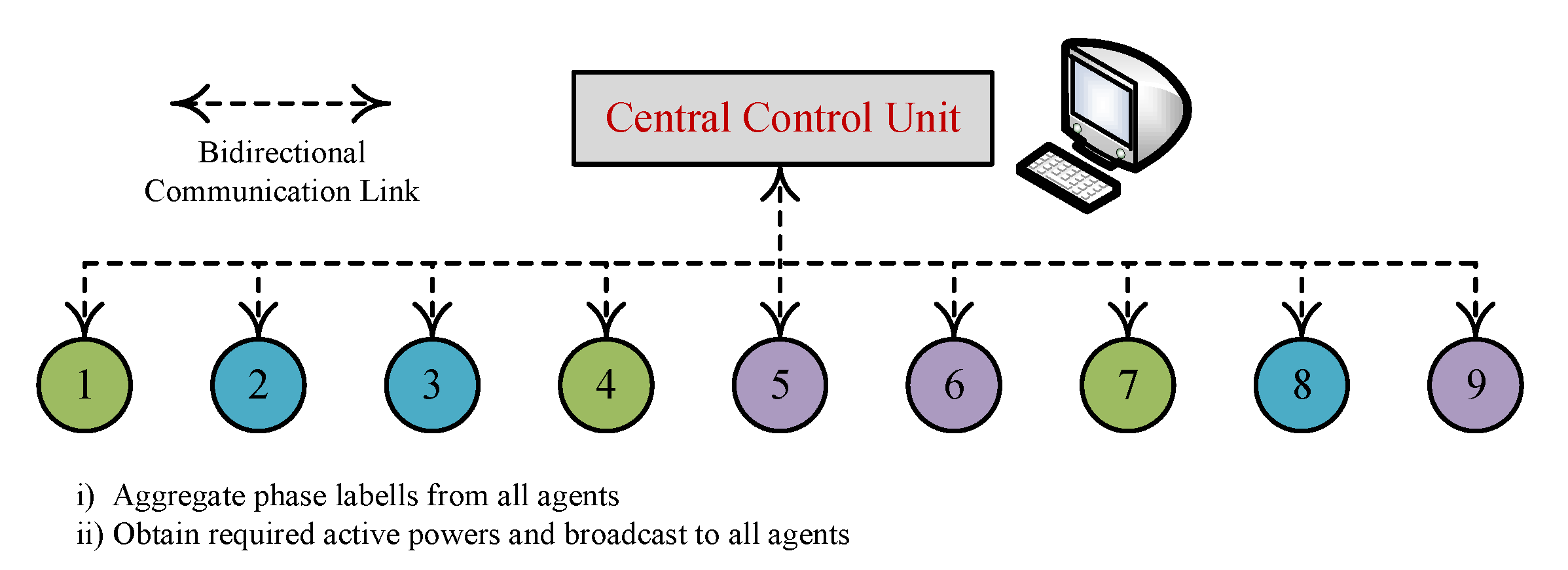
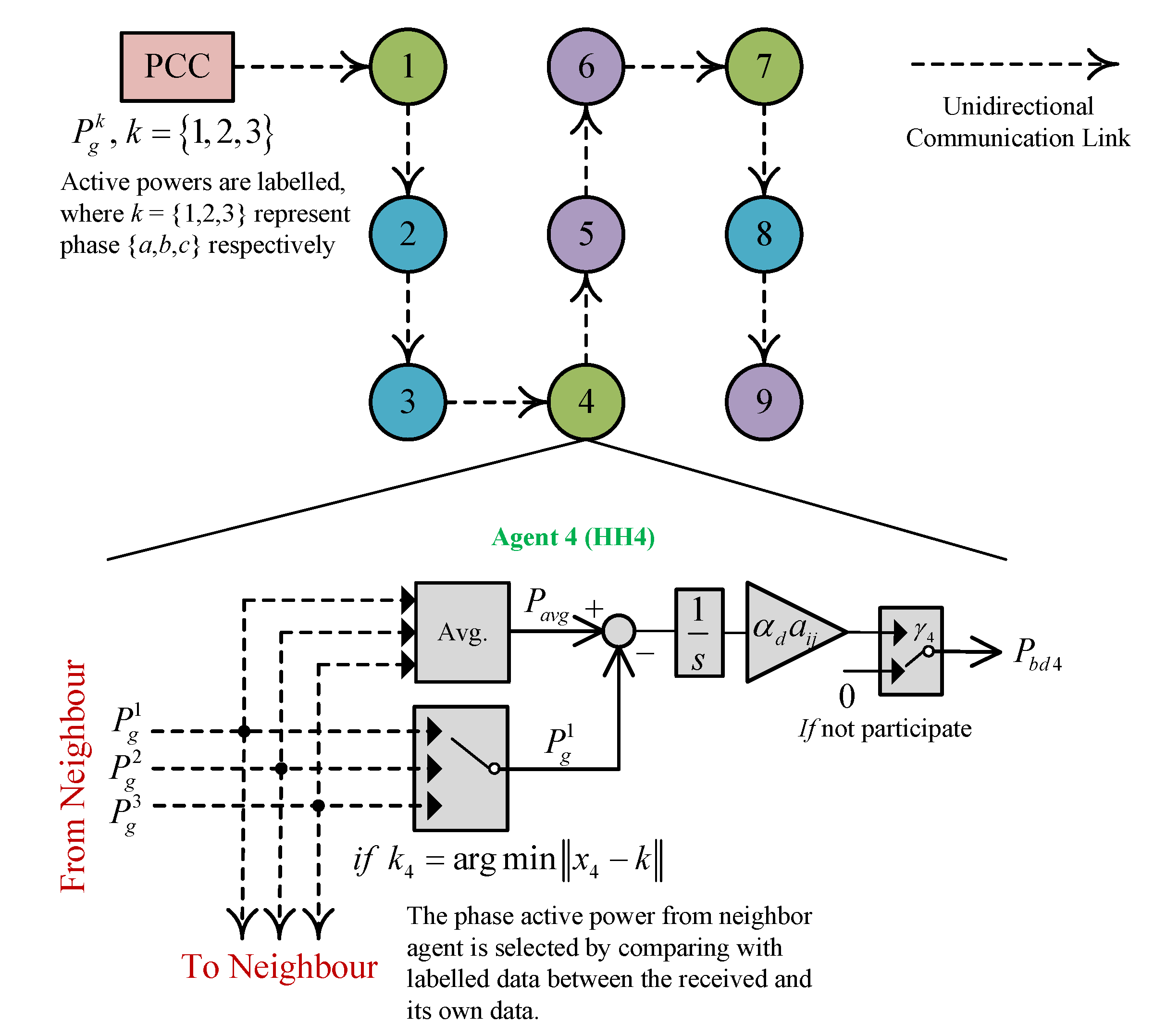

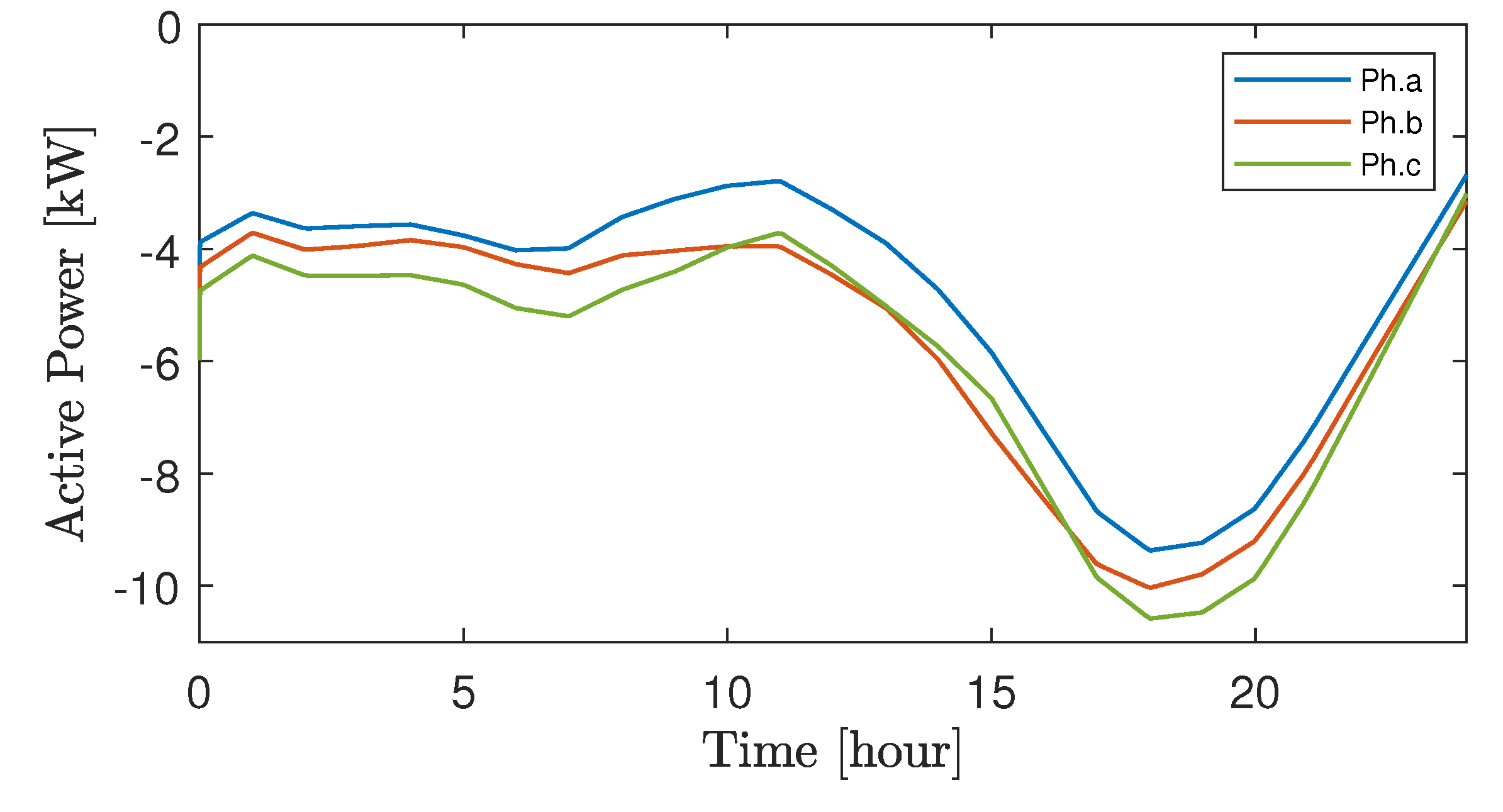
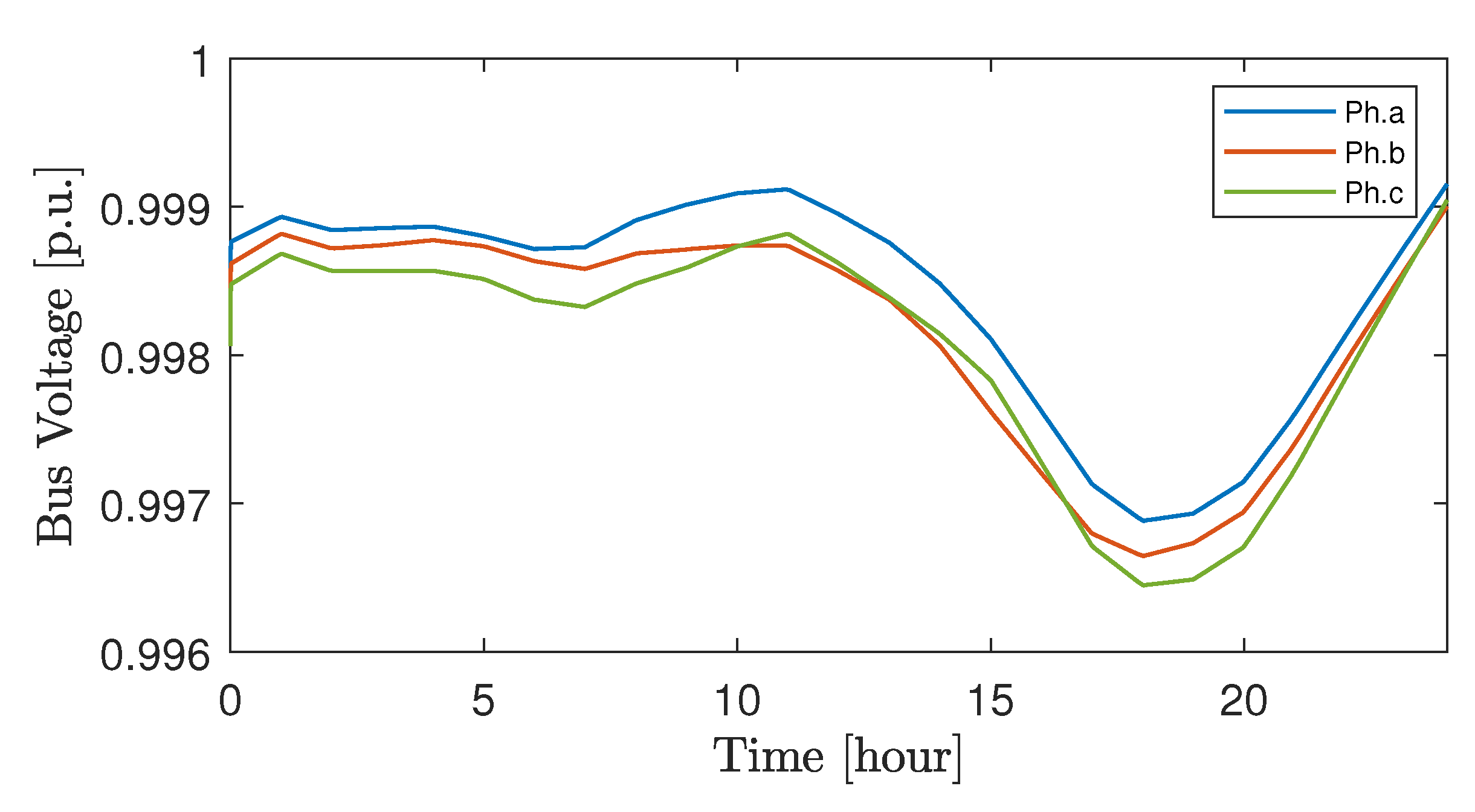
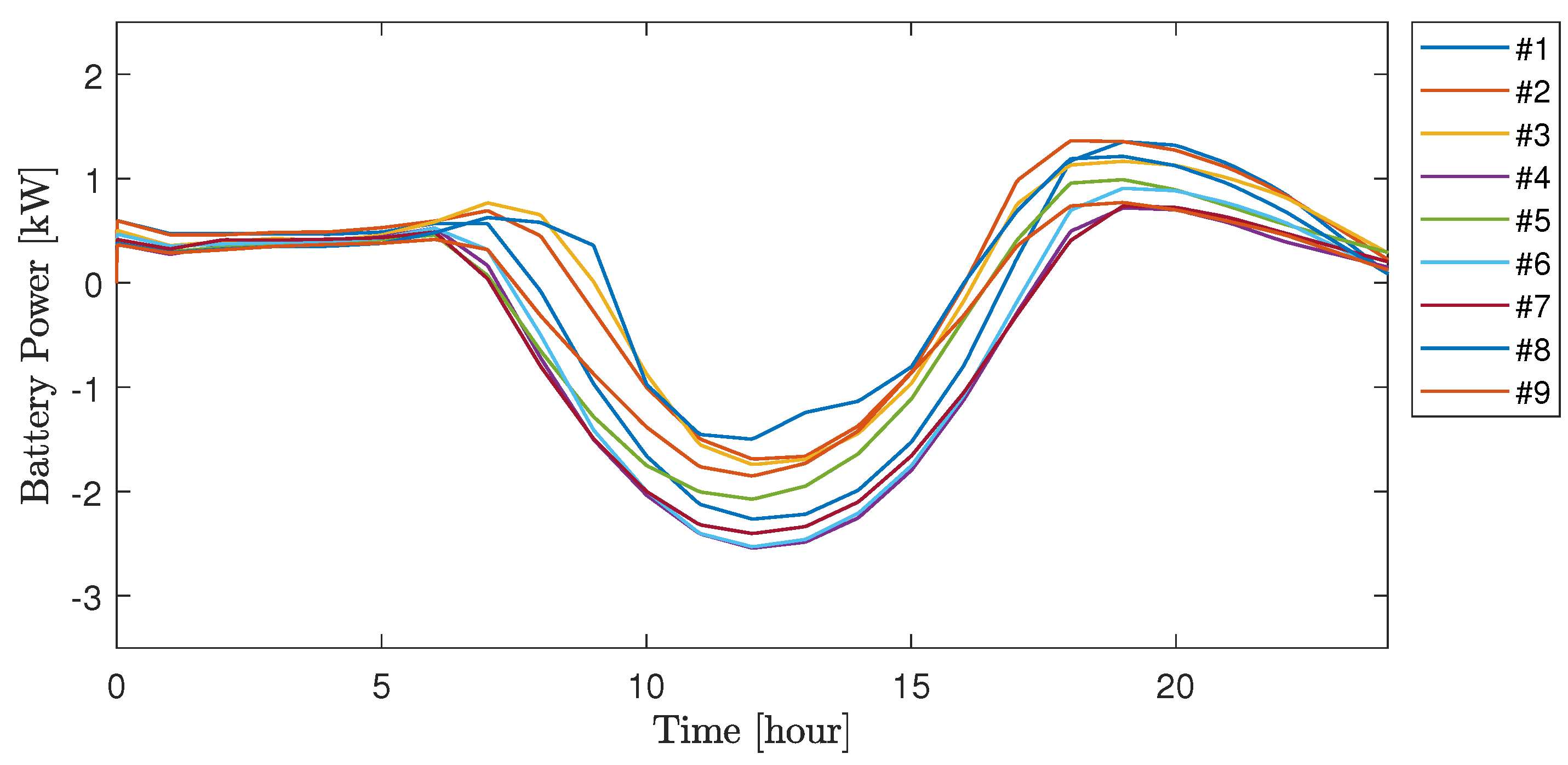
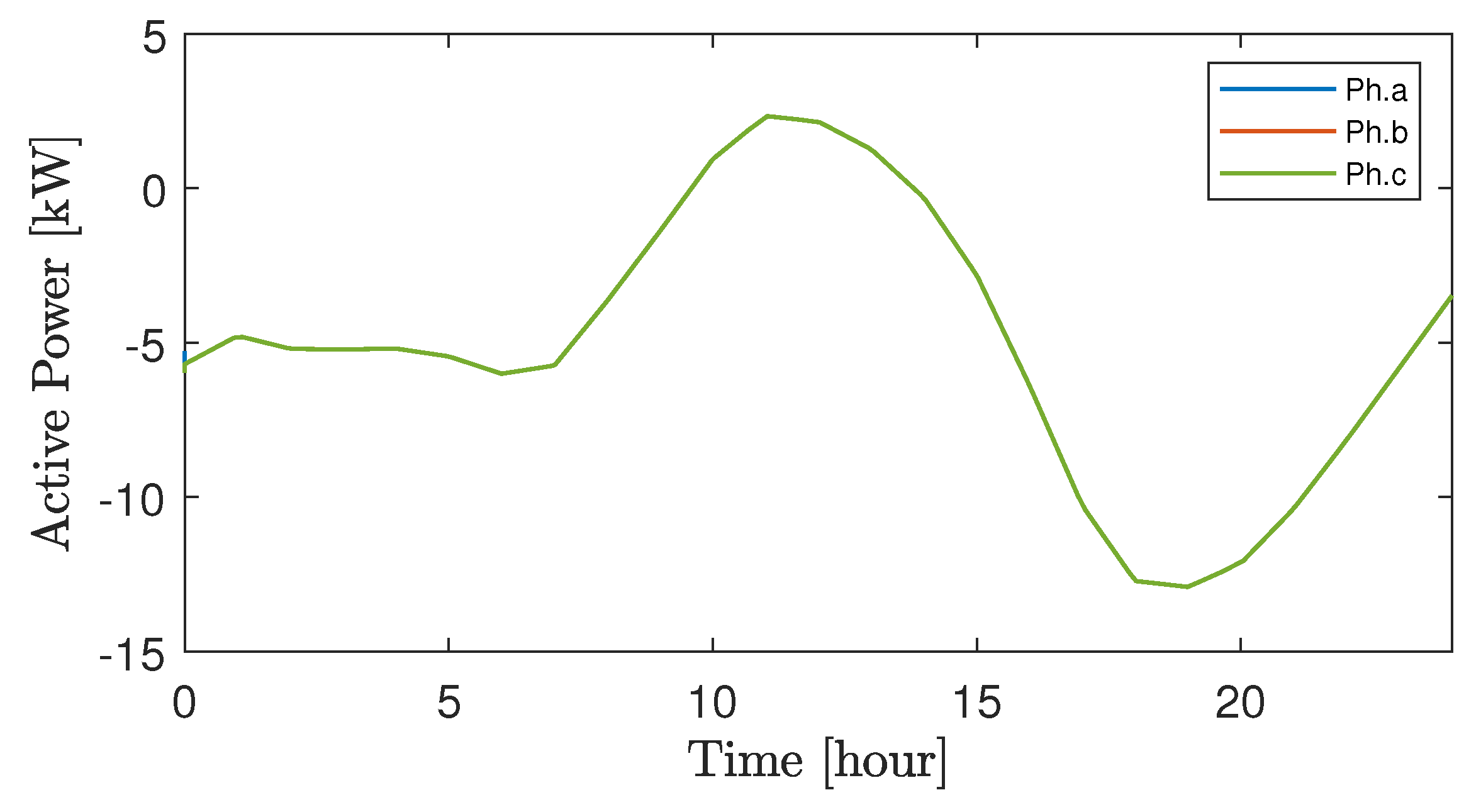
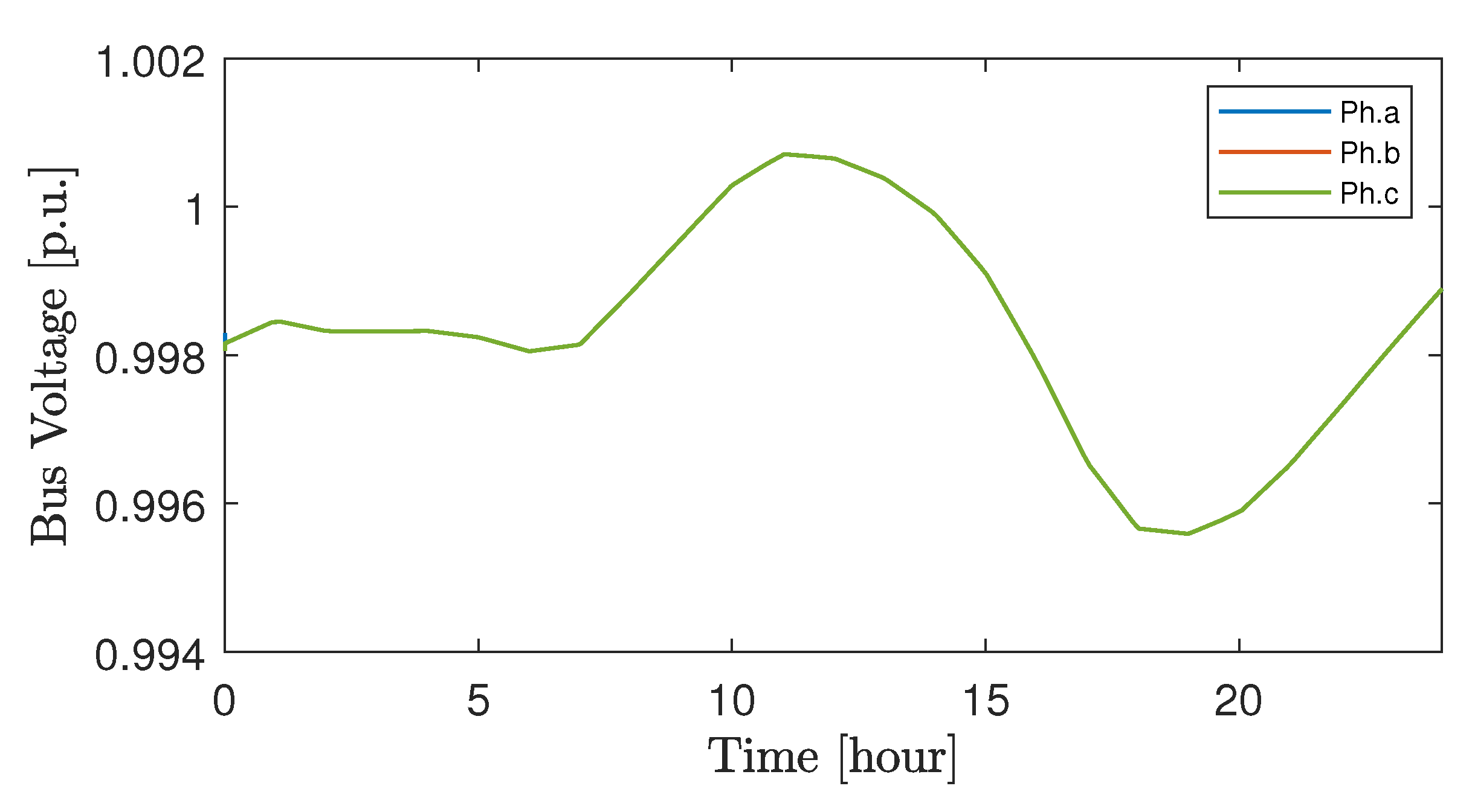
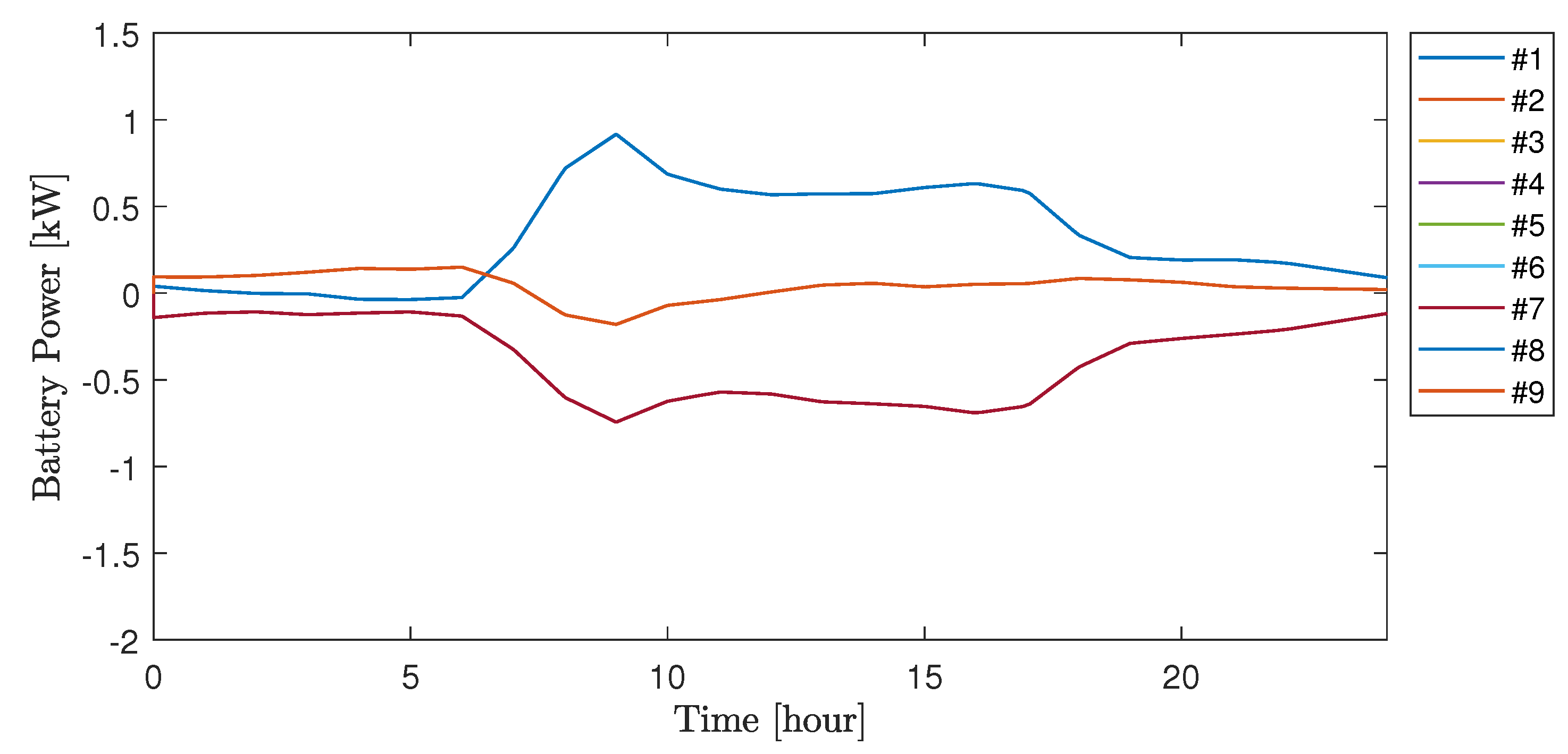
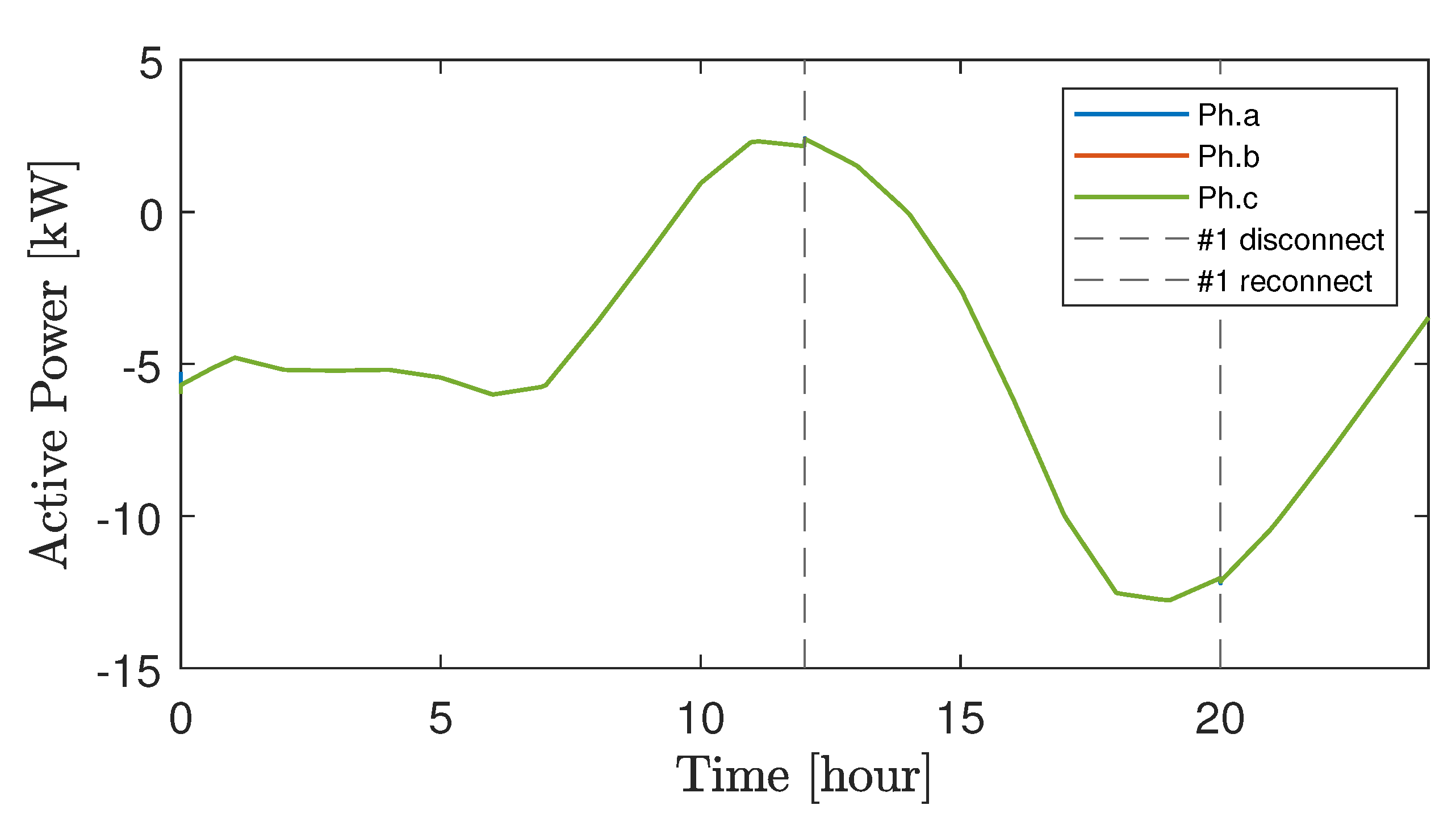
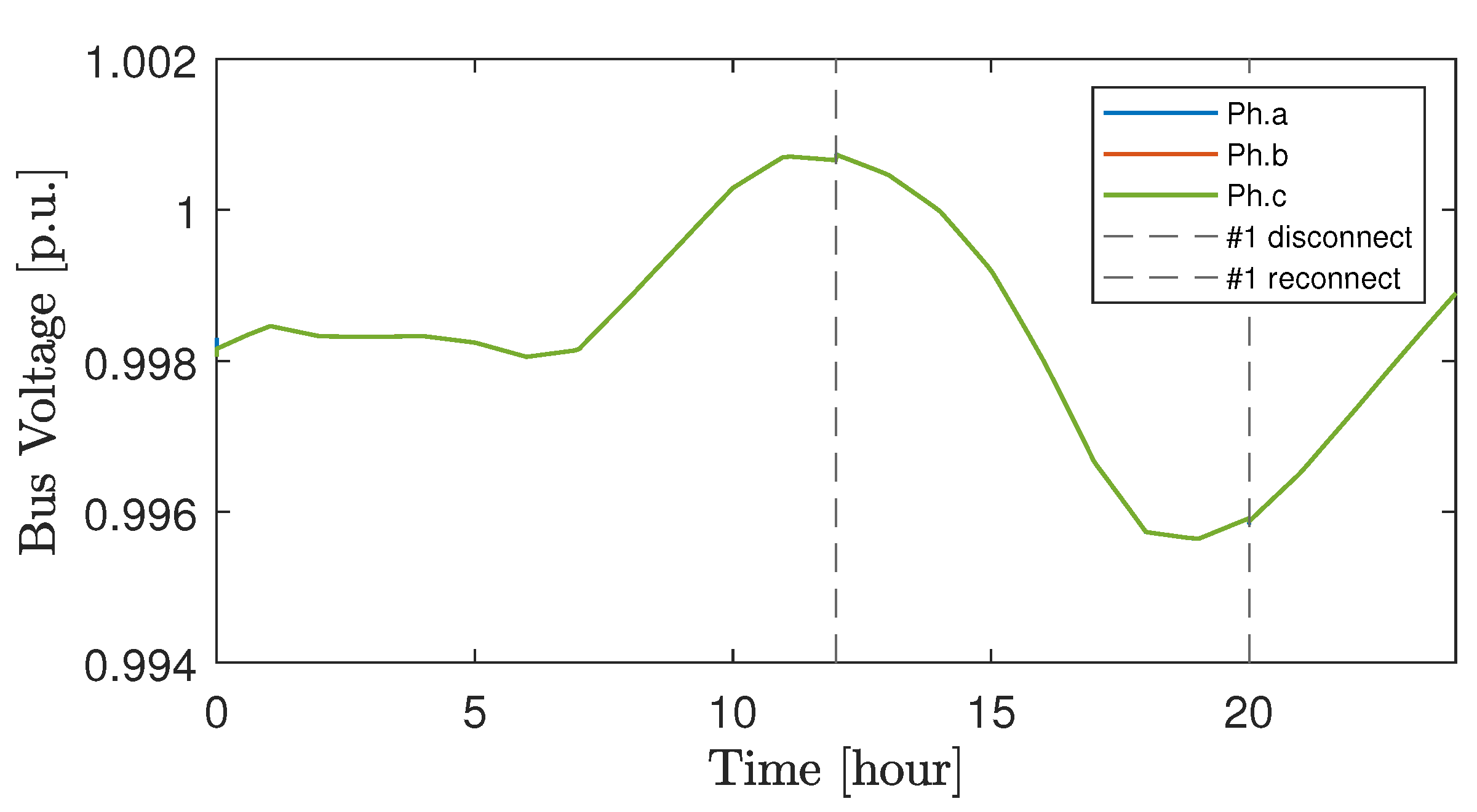
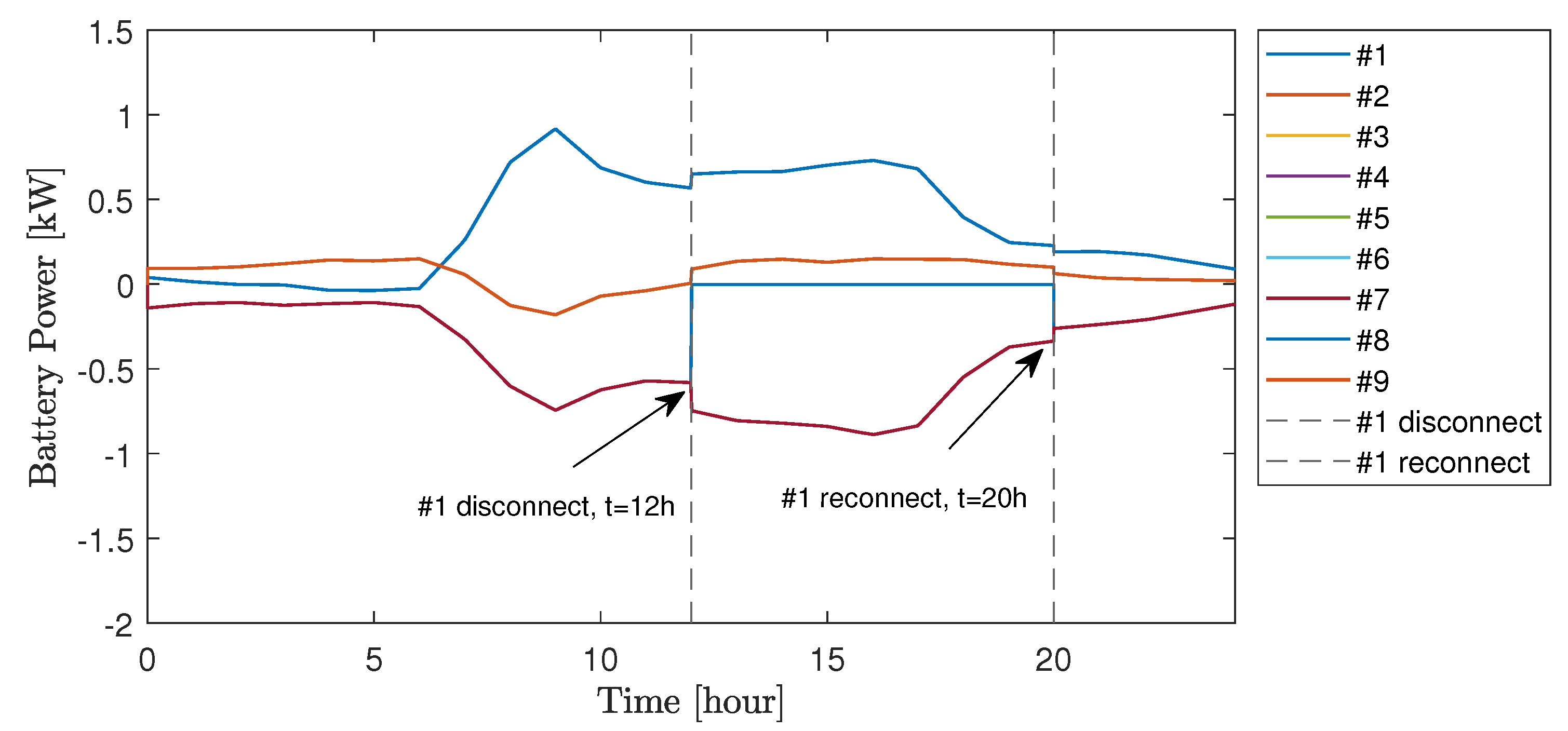
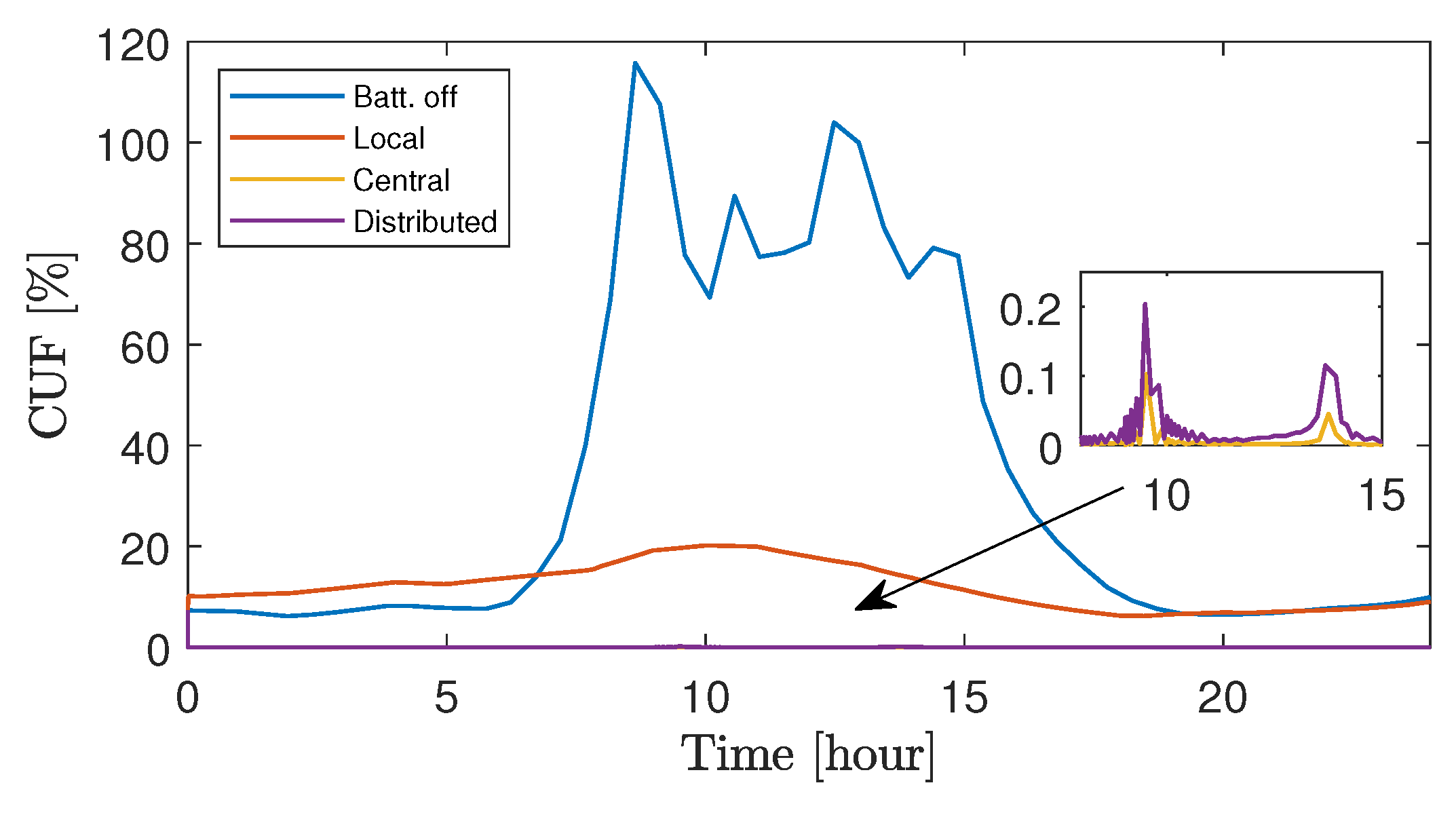
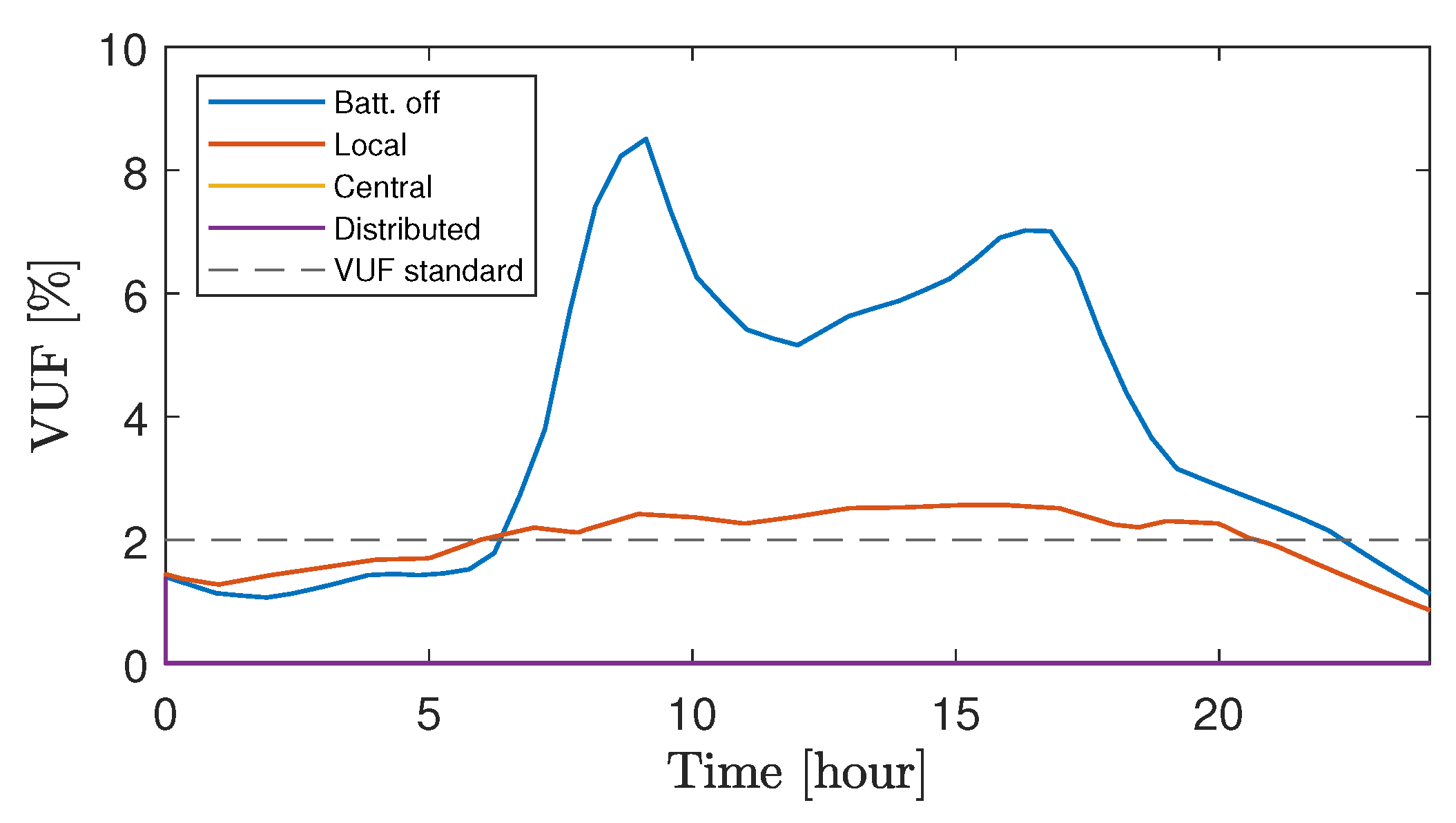
| Ref. | Converter | EV | DES | CES | Centralized | Decentralized | Distributed | VUF | CUF | 1-ϕ | Test System |
|---|---|---|---|---|---|---|---|---|---|---|---|
| [13] | 🗸 | 🗸 | 🗸 | Real-44-bus | |||||||
| [14] | 🗸 | 🗸 | 🗸 | 🗸 | IEEE-13-bus | ||||||
| [15] | 🗸 | 🗸 | 🗸 | IEEE-13-bus | |||||||
| [16] | 🗸 | 🗸 | Simplified | ||||||||
| [17] | 🗸 | 🗸 | 🗸 | 🗸 | Real-74-bus | ||||||
| [18] | 🗸 | 🗸 | 🗸 | IEEE European | |||||||
| [19] | 🗸 | 🗸 | 🗸 | IEEE-123-bus | |||||||
| [20] | 🗸 | 🗸 | 🗸 | Simplified | |||||||
| [21] | 🗸 | 🗸 | 🗸 | Australian DS | |||||||
| [22] | 🗸 | 🗸 | 🗸 | 🗸 | Australian DS | ||||||
| [23] | 🗸 | 🗸 | 🗸 | Simplified | |||||||
| [24] | 🗸 | 🗸 | 🗸 | Simplified | |||||||
| Our | 🗸 | 🗸 | 🗸 | 🗸 | 🗸 | IEEE-13-bus |
| Agent | 1 | 2 | 3 | 4 | 5 | 6 | 7 | 8 | 9 |
|---|---|---|---|---|---|---|---|---|---|
| Bus | 646 | 646 | 611 | 652 | 652 | 652 | 680 | 680 | 680 |
| Phase | a | b | b | a | c | c | a | b | c |
| Parameter | Symbol | Value |
|---|---|---|
| Number of agents | N | 9 |
| Microgrid voltage level | 4.16 kV-LL (1.0 p.u.) | |
| Battery capacity | 25 kW·h | |
| Coupling gain | 1 | |
| Centralized control gain | ||
| Distributed control gain | ||
| Willingness factor |
Publisher’s Note: MDPI stays neutral with regard to jurisdictional claims in published maps and institutional affiliations. |
© 2021 by the authors. Licensee MDPI, Basel, Switzerland. This article is an open access article distributed under the terms and conditions of the Creative Commons Attribution (CC BY) license (https://creativecommons.org/licenses/by/4.0/).
Share and Cite
Pinthurat, W.; Hredzak, B. Distributed Control Strategy of Single-Phase Battery Systems for Compensation of Unbalanced Active Powers in a Three-Phase Four-Wire Microgrid. Energies 2021, 14, 8287. https://doi.org/10.3390/en14248287
Pinthurat W, Hredzak B. Distributed Control Strategy of Single-Phase Battery Systems for Compensation of Unbalanced Active Powers in a Three-Phase Four-Wire Microgrid. Energies. 2021; 14(24):8287. https://doi.org/10.3390/en14248287
Chicago/Turabian StylePinthurat, Watcharakorn, and Branislav Hredzak. 2021. "Distributed Control Strategy of Single-Phase Battery Systems for Compensation of Unbalanced Active Powers in a Three-Phase Four-Wire Microgrid" Energies 14, no. 24: 8287. https://doi.org/10.3390/en14248287
APA StylePinthurat, W., & Hredzak, B. (2021). Distributed Control Strategy of Single-Phase Battery Systems for Compensation of Unbalanced Active Powers in a Three-Phase Four-Wire Microgrid. Energies, 14(24), 8287. https://doi.org/10.3390/en14248287






